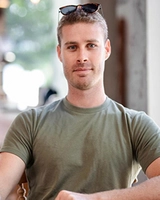What Strategies Help Identify Market Gaps for Small Businesses?
Small Biz Digest

What Strategies Help Identify Market Gaps for Small Businesses?
Uncovering and addressing market gaps is a cornerstone of entrepreneurial success, and we've gathered insights from CEOs and founders to learn how they did just that. From exploiting the convenience gap in 3D printing to filling the niche for neutral HR software brokerage, explore the diverse strategies of fourteen industry innovators as they reveal their journeys to market leadership.
- Exploiting 3D Printing Convenience Gap
- Strategic Planning for Unmet Customer Needs
- Engage Customers to Identify Opportunities
- Niche Market Discovery Through Personal Passion
- Combining Aesthetics and Utility in Lighting
- Crafting Solutions to Address Customer Preferences
- SEO Focus for Local Service Providers
- Carving a Niche in Custom Software
- Filling the Demand for Traditional Yoga
- Simplifying Online Funeral Home Selection
- Digital-First Approach in Car Care
- Democratizing Digital Marketing for Small Businesses
- Data-Driven E-Commerce Growth Strategies
- Neutral Brokerage Fills HR Software Gap
Exploiting 3D Printing Convenience Gap
I noticed a growing buzz around 3D printing, but many people seemed overwhelmed by the technology. There were fantastic high-end printers available, but a gap existed for those who wanted the convenience of 3D printing without the hassle of upfront investment and technical knowledge. That's why I decided to focus on providing user-friendly 3D printing services. I take care of the technical aspects, from file preparation to printing and finishing, allowing customers to simply submit their ideas and receive their 3D creations.

Strategic Planning for Unmet Customer Needs
In my experience, identifying a gap in the market was crucial for the success of my business. It all started with truly understanding the pain points and unmet needs of my target customers. I spent countless hours researching, observing, and listening to their frustrations with existing solutions. That's when I noticed a glaring gap—a lack of a product or service that could effectively address their specific challenges.
From there, I meticulously planned and executed a strategy to fill that gap. I leveraged my expertise, assembled a talented team, and developed a unique offering tailored to the market's demands. The key was staying agile, continuously iterating based on customer feedback, and consistently delivering value that no one else could match.

Engage Customers to Identify Opportunities
Generally, I think identifying market gaps involves a lot of research and careful analysis.
Small businesses want to make sure that customers are at the heart of every decision they make, and so primary research through customer surveys, IDIs, or even focus groups will help small businesses engage with customers, understand their needs, wants, and pain points. This direct feedback is invaluable in identifying opportunities. Industry research, and keeping tabs on industry trends, can also help identify potential market gaps.
Competitor analysis is also crucial. Study your competitors to understand what products or services they offer, how they position themselves, and where they might be lacking.

Niche Market Discovery Through Personal Passion
Spotting the gap in the market for Frostbeard Studio came from a personal desire that resonated with a wider audience: the need for a candle that smelled like a library. As a massive book nerd and someone with strong internet shopping prowess, it was puzzling not to find a single candle that captured the essence of old books or a cozy library. This realization sparked the idea that there must be others like me—book lovers craving that nostalgic library scent. Armed with a DIY ethos and a background in studio art and English literature, I set out to create something unique: a line of candles specifically designed for book enthusiasts.
The journey began in my mom's kitchen, experimenting with fragrance oils and pouring candles into Mason jars with handwritten labels. Our first creation, the Oxford Library candle, encapsulated the smells of wood, leather, and dust, embodying the essence of a traditional library. This was a hit, and it led us to carve out an entire niche for bookish candles. Since then, Frostbeard Studio has developed well over 100 unique candle scents, each inspired by the myriad atmospheres found within literature and beloved book spaces. Steadily, our audience grew, as did our presence on platforms like Etsy and, eventually, our own website, highlighting a clear market demand for our niche scents.
Filling this gap was not without its challenges. My husband, Tom, and I had to navigate the steep learning curve of transforming a small project into a sustainable handmade business. From learning about shipping logistics to scaling production without losing our DIY touch, every step was a lesson. Yet, it was our shared passion for books, art, and creativity that kept driving us forward. Now, with a curated collection that resonates with fellow bibliophiles, Frostbeard Studio stands as a testament to the idea that niche passions can indeed translate into successful business ventures when they tap into an unaddressed demand in the market.

Combining Aesthetics and Utility in Lighting
One key factor in discovering the need for Festoon House was the growing desire for outdoor lighting solutions that perfectly combined aesthetics and utility. We saw that existing market solutions lacked durability or design appeal, leaving customers seeking more.
To address this gap, we undertook extensive market research, including customer feedback, industry trends, and rival products. Armed with this knowledge, we set out to create outdoor LED fairy lights that not only matched but exceeded consumer expectations in terms of quality, longevity, and creative flexibility.
We successfully filled the market gap with Festoon House's outdoor LED fairy lights thanks to intelligent product development, painstaking attention to detail, and a commitment to customer happiness. Our commitment to innovation, quality, and customer-centricity has allowed us to carve out a position in the competitive field, addressing a previously unmet market demand.

Crafting Solutions to Address Customer Preferences
In my experience, identifying a market gap for our business involved extensive research and analysis. At our company, we typically utilize surveys, interviews, and competitor evaluations to thoroughly grasp customer preferences and needs. Additionally, based on my expertise and knowledge, we pinpointed emerging trends and areas where existing solutions fell short. Once I identified the gap, I took charge of crafting a distinct value proposition and customizing our offering accordingly. Through rounds of prototyping, testing, and gathering feedback, I ensured that our solution effectively addressed the gap and fulfilled customer requirements. Subsequently, we launched our product or service with tailored marketing strategies to target our ideal audience and establish our presence in the market.

SEO Focus for Local Service Providers
Identifying a gap in the market for That Local Pack originated from my real-life experiences assisting local businesses in boosting their online presence. Despite the widespread availability of SEO and digital marketing services, I noticed a specific lack of focus on the unique challenges faced by local service providers. Many were struggling to appear in search results, losing out to larger, non-local competitors. This realization struck me deeply, given my background in content creation, SEO, and my roles at various tech startups, where I'd successfully enhanced online visibility and engagement by tailoring strategies to specific audiences.
The initial step to fill this gap involved conducting comprehensive research into local search trends and understanding the nuances of Google's ranking factors for local businesses. Drawing upon my experience as a Senior Content Marketing Manager, where I had significantly increased a tech platform's online visitors through targeted content strategies, I applied similar principles to a local context. I began by developing a structured SEO plan for local businesses, focusing on local keywords, optimizing Google Business Profiles, and creating authentic, localized content that resonated with the community. The goal was not just to increase rankings but to establish these businesses as trustworthy, go-to local service providers.
Leveraging insights from my previous projects, including the success stories of significantly boosting revenue for clients through strategic SEO practices, I aimed to replicate and adapt these strategies for local businesses. For instance, by emphasizing the importance of verification and optimization of Google My Business accounts, as well as engaging in localized content creation, I provided a clear path for local service providers to enhance their online visibility. My unique approach centered on understanding and leveraging local search behavior, a strategy underutilized by generic SEO agencies, ensuring that my clients stood out in the crowded digital landscape. Through That Local Pack, I committed to transforming the online presence of local businesses, making them not just visible but preferred choices in their communities.

Carving a Niche in Custom Software
Launching Zibtek was like navigating through a dense forest, searching for a clearing that others hadn't found. We identified a gap in the software development market: a need for highly customized solutions tailored to unique business challenges, a niche that was underserved.
Our exploration began with deep market research, conversations with potential clients, and competitor analysis. Like botanists identifying a new species, we discovered businesses were seeking partners who could offer bespoke software solutions, not just off-the-shelf products.
Armed with this knowledge, we charted our path:
- Developing Custom Services: We tailored our offerings to meet the specific needs of each client, ensuring flexibility and relevance.
- Assembling a Skilled Team: We built a team capable of crafting these customized solutions, emphasizing adaptability and expertise.
- Market Education: Through targeted content marketing, we illuminated the benefits of custom software solutions, guiding businesses towards our services.
Zibtek emerged as a beacon in the software development market, providing that much-needed customized approach. By filling this gap, we not only established ourselves as leaders but also cultivated a dedicated client base appreciative of our unique value proposition.
Finding and filling a market gap requires careful research, strategic planning, and a commitment to meet unaddressed needs. For Zibtek, this meant becoming the clearing in the forest for businesses seeking custom software solutions, demonstrating the power of tailored services in a crowded marketplace.

Filling the Demand for Traditional Yoga
As the founder of Yoga Kawa Studios in Toronto, I noticed a growing interest in yoga, but many classes seemed focused on trendy, social media-friendly aspects rather than the core benefits of yoga. I saw a gap for people seeking a more traditional, wellness-oriented practice. That's why I developed our signature puppy yoga classes—a calming environment where participants could focus on their breath and postures, with the added benefit of adorable furry friends to snuggle with!

Simplifying Online Funeral Home Selection
I approach this from the customer's perspective. I look for points of friction for customers and then try to create solutions that businesses can actually implement. Oftentimes, businesses are aware of these pain points, but there are some structural obstacles to fixing them. When I was starting my own business, I noticed that choosing a funeral home online is more complicated than it should be. Some funeral homes have a great in-person experience but terrible websites. Other businesses look great online but actually provide middling service. That's why I developed easy solutions (from the funeral home's perspective) that can drastically improve their online presence. This solves problems for the funeral home and provides a better experience for potential customers.

Digital-First Approach in Car Care
Identifying the gap in the market for Schmicko was a result of both personal experience and extensive market research. I noticed a rising demand for convenience in every aspect of life, yet the car care industry seemed sluggish in adopting a customer-centric, digital-first approach.
People were increasingly seeking services that could seamlessly integrate into their busy schedules without compromising on quality. To fill this gap, I invested in developing an intuitive online platform that allows customers to book mobile car detailing services at their convenience. We prioritized user experience in our app and website, ensuring that booking a service was as simple and stress-free as possible.
Furthermore, we focused on building a team of highly-skilled professionals who shared our vision of providing top-notch services with unparalleled convenience. By combining technology with superior service, Schmicko was able to fill a significant gap in the market, offering a solution that catered to the modern consumer’s needs for efficiency and excellence.

Democratizing Digital Marketing for Small Businesses
Identifying a gap in the market for MBC Group came from a detailed observation of the struggles small business owners face in adapting to digital marketing trends. It was clear that while many small businesses understood the importance of adapting to digital, they often lacked the resources or knowledge to effectively implement these strategies. Our goal became to democratize access to cutting-edge marketing solutions, enabling small businesses to compete on a level playing field with their larger counterparts.
We took several steps to fill this gap. Firstly, we immersed ourselves in understanding the unique challenges faced by small businesses, which involved extensive market research, including surveys and interviews. This hands-on research provided invaluable insights that helped shape our service offerings. For example, we learned that small businesses found traditional digital marketing solutions overly complex and time-consuming. In response, we developed AiDen, our AI-driven chatbot, to simplify customer interactions, making digital marketing more accessible to our clients.
Through cases like Groupon, we also learned the importance of leveraging economic conditions to offer value that resonates with both businesses and their customers. From this insight, we tailored our marketing strategies to focus on offering cost-effective, high-value solutions for small businesses, especially in challenging economic times. The result has been a better alignment of our services with the needs of small businesses, leading to increased client satisfaction and business growth. Through these steps, we successfully filled a market gap, providing small businesses with powerful, yet easy-to-use, digital marketing tools.

Data-Driven E-Commerce Growth Strategies
Identifying a gap in the e-commerce market for First Pier stemmed from observing the struggles many online retailers faced in optimizing their digital storefronts for growth. Despite the abundance of tools and platforms available, the challenge wasn't in the lack of options but in effectively harnessing these resources to drive meaningful growth. My background in e-commerce growth, spanning over 20 years, allowed me to see the potential in not just providing tools but offering a comprehensive, data-driven strategy that focused on conversion optimization, customer retention, and scaling businesses sustainably.
One of the first steps I took was diving deep into understanding the behaviors and preferences of online shoppers. This involved analyzing data from various sources, including website analytics and customer feedback platforms. By integrating insights on shopping behaviors, I was able to tailor strategies specifically suited to improve the online customer experience, which is crucial for building trust and encouraging repeat business. For example, we enhanced product discovery on a client's website by simplifying navigation and improving product descriptions with high-quality images and videos, leading to a significant uptick in conversion rates.
Furthermore, leveraging social proof through customer reviews became a cornerstone of our approach. Recognizing the power of authentic customer feedback, we implemented strategies to collect and display reviews prominently, boosting confidence in potential buyers. This practical application of understanding the e-commerce ecosystem and customer psychology has been instrumental in driving growth for our clients. Implementing such changes wasn't just about adopting new tools but about weaving these elements into a coherent strategy that resonates with the target audience, filling a significant gap in the e-commerce market for businesses looking to scale effectively.

Neutral Brokerage Fills HR Software Gap
My journey to founding OutSail stemmed from firsthand experiences in HR software sales. I noticed a recurring theme: Buyers were overwhelmed with options, yet inherently distrustful of sales reps, including myself. This 'vendor fatigue' became apparent as a significant gap in the market. Recognizing that my ability to assist was hindered by my employment by a software vendor, I saw an opportunity to serve buyers more effectively from an independent stance. OutSail was born out of this realization, with a mission to act as a neutral broker for HR software. We took steps to understand the buyers' needs deeply and align our services to advocate for them, bridging the gap between complex software solutions and the businesses in need of them.
